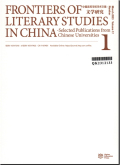Situational Intertextuality: The Similar Styles and Same Structure of Han and Wei Fu and Novels
Both the fu (narrative) writers and novelists in the Han and Wei periods excelled in observing and selecting “situations” and forming intertextuality in text creation. The common structure shared by Han and Wei fu and novels features a question-and-answer format that contributes to the “fictionality” and narrative development and a “particularly brilliant ending” that is instrumental in providing wise advice and expressing emotions. Fu works, through their classic themes, story arrangements, and plot settings in telling the tales of individuals or the supernatural, inspired novel creation in the Wei and Jin periods. Furthermore, fu works may contain novelistic allusions, while novels may quote fu works and contain stories involving fu composition. They are “similar in style and same in structure,” contributing to the prosperity of early Chinese literature through fictionality and exaggeration, with paradigmatic significance in the construction of “situations” in Chinese narrative literature.
fu、 novel、 situations、 similar in style
18
2024-09-26(万方平台首次上网日期,不代表论文的发表时间)
共18页
230-247




